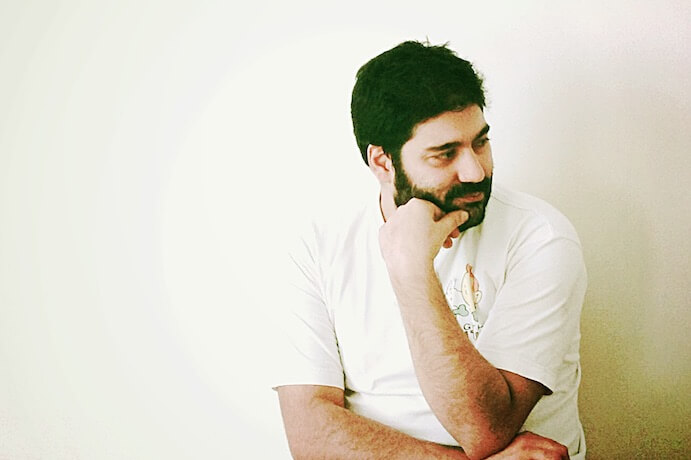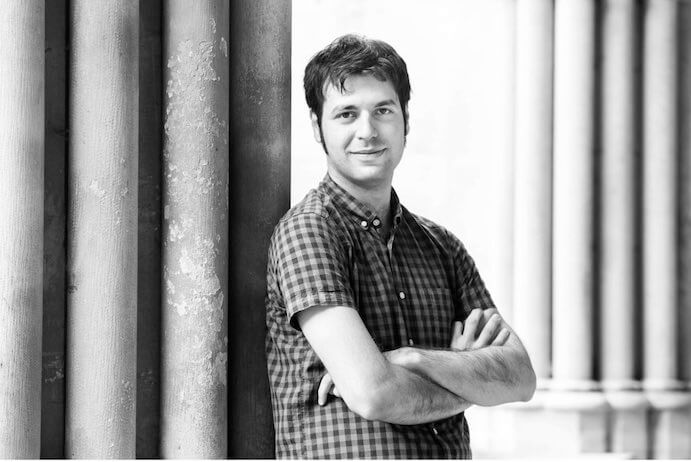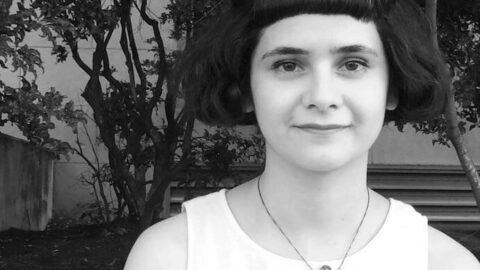Within the last two years, MATA’s call for scores received a sudden influx of Iranian pieces. Submissions from this area of the world were unexpected, and MATA frankly saw an unusual chance to question bias and showcase “uniformly excellent” music. In light of recent travel restrictions on seven predominantly Muslim countries, the July 8, 2017 inaugural concert showcased only composers from these countries. Nothing was exotic; the composers were honored colleagues; three of the five pieces received their American premiere. Friends of MATA, an ensemble created for the three-year biennial series, prepared to communicate Middle Eastern perspectives of Western instruments. After spare introductions, the music communicated crystalline humanity and hope.
The opening Hommage a’ Abolhasan Saba walked out of Western modality into all the colors of daylight. Idin Samimi Mofakham’s (Iran) sophisticated duet for cello and violin did the simplest of things: sometimes melody or harmony; up or down; solo or shared. But the strings nestled within historic Persian tonalities for exquisite pigment. One span of shared melody in parallel pitch space contained pencil shadings of timbre. Harmonies spilled shadow, and the melodies, based on one of the seven main modes of traditional Persian music, slipped through sounds rounder than “microtones.” In an exquisite moment, Maria Hadge drained blood and turned her sound pale. Then color, color as her cello surged into full-throated song.

Beati Pacifici / In Memorial Rachel Corrie set one of Jesus’s most famous Beatitudes from his Sermon on the Mount for piano and soprano. “Blessed are the peacemakers for they shall be called the children of God.” (Matthew 5:9) Zaid Jabri (Syria) memorialized Corrie’s death protesting in Gaza while exposing her deteriorating conviction. Isabelle O’Connell on piano poured a foundational tone cluster, layered coats of a single repeated note, and then listened to the castle crumble. This idea anchored the work: we listened to decay, not production. Sharon Harms‘ expressive entrance, rending the famous text, bent attention around a new center of grave lament. The setting slowly arched toward the high point of her range, a note she sang with nearly closed mouth. It was an agonizing visual. The piano once again played decay, and shifted to funereal gong tones before final, augmented silence.
Arash Yazdani (Iran) wrote the sound of wrestling with contemplative text. Like its title, Aphorism was subjective. Each musician followed the composer’s direction: “The speed of the pattern, phrasing, breath between each line or each repetition is according the players’ interpretation of that poem.” The flute, clarinet, violin, and cello quarter mulled over Yazdani’s musical aphorism of layered entrances, philosophy, and a pause. All climbed from low quiet to high volume, expending themselves into the rest, and the piano took airtime. Carlos Cordeiro took up the bass clarinet and conductor Carl Christian Bettendorf switched from classical conducting to finger numbers and left arm markers. Pitch swirled skyward, but volume was restrained in the feeling of giving the benefit of the doubt too long. Was this respectable self-control or suppression? Was the piano oppressing or part of the ensemble? Suddenly, the restrained frenzy snapped to silence. The cycle of silence, piano, and lightness began again, this time with clarinet. After finishing their thought, the quartet and conductor clipped gray plastic tubes around their necks and blew unpitched air. They surrounded the piano, took hold of raffia twine wrapped around the strings, scratched the strings like tumbleweeds as piano faded out. Backs to the audience, they finished tied to the same noisemaker. Their unity was uncertain.

For fun, Lullaby for Shattered Angels swirled through a soundtrack of a day’s hustle. The piece’s grainy, sliding flavor was dislocated until the harp kicked in and began driving evocative episodes. The work was an atmosphere of gerunds: flowing, knocking, running, ticking. The three instruments produced a wildly concrete spectrum of sounds, and Ashley Jackson made the harp get raunchy. She made it pluck, twang, and groove beyond gentility; she rattled it with forceful low string plays, full-hand slapped the strings, and percussed on its frame. Martha Cargo gusted, breezed, and fluttered flute from zero to pitch. Stephanie Griffin‘s viola added dance, vocal strains, and quick ticking downbows. Beyond a three-note Kurdish lullaby motif, little melody or meter anchored the audience’s temporality. Instead, they were pulled by the piece’s taffy adventure. As an extra treat after her Lullaby, Aida Shirazi (Iran) Skyped in to comment on Iran’s new music scene. Despite monetary and state license challenges, new music pursuits and programming are resilient and growing.
Shergo Dakouri (Kurdistan) dedicated the final piece to preserving what is beautiful in Kurdish heritage. In an intro video, he spoke of Kurdistan’s uncertain present and composed its future hopes. Beyati was the program’s largest ensemble: lush, lucid, and proud. Timpani rolled the piece open, and contrabass, bassoon, clarinet, english horn, two violins, viola, and cello joined the narrative. Melody climbed to a peak, falling sharply through a series of downward stepping solos. The valley’s material was both mournful and buoyant, climbing out of itself into an ensemble melody. Another stepwise motif, two groups of three climbing steps followed by two lowered shelf tones, meandered into a clearing with timpani and a determined final upbow. It was a moving, hopeful close to a program situated within complexity. Here is a series that is current, expansive, and moving.
























